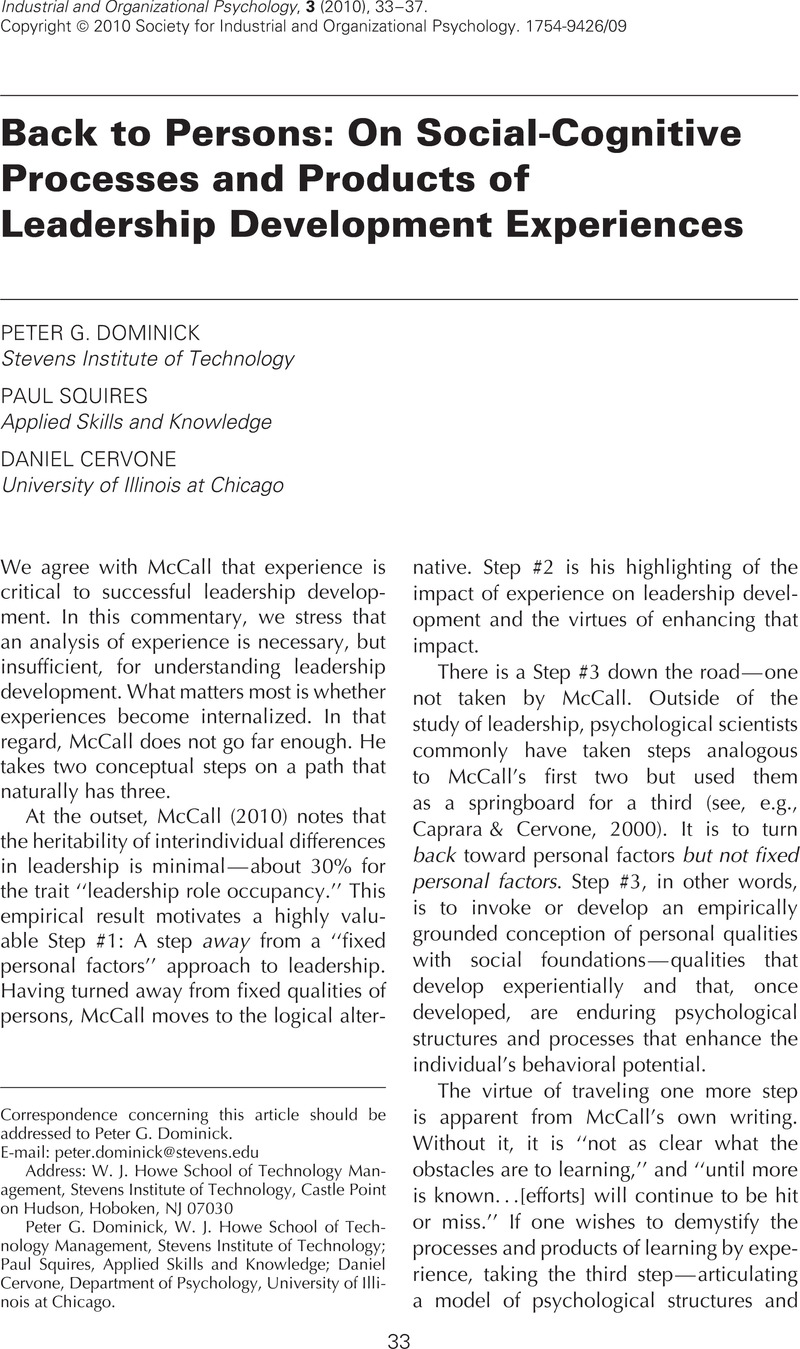Crossref Citations
This article has been cited by the following publications. This list is generated based on data provided by Crossref.
McCall, Morgan W.
2010.
Peeling the Onion: Getting Inside Experience-Based Leadership Development.
Industrial and Organizational Psychology,
Vol. 3,
Issue. 1,
p.
61.
Petriglieri, Gianpiero
Wood, Jack Denfeld
and
Petriglieri, Jennifer Louise
2011.
Up Close and Personal: Building Foundations for Leaders' Development Through the Personalization of Management Learning.
Academy of Management Learning & Education,
Vol. 10,
Issue. 3,
p.
430.
De Meuse, Kenneth P.
Dai, Guangrong
Swisher, Victoria V.
Eichinger, Robert W.
and
Lombardo, Michael M.
2012.
Leadership Development: Exploring, Clarifying, and Expanding Our Understanding of Learning Agility.
Industrial and Organizational Psychology,
Vol. 5,
Issue. 3,
p.
280.
Petriglieri, Gianpiero
and
Petriglieri, Jennifer Louise
2015.
Can Business Schools Humanize Leadership?.
Academy of Management Learning & Education,
Vol. 14,
Issue. 4,
p.
625.
McClean, Shawn T.
Barnes, Christopher M.
Courtright, Stephen H.
and
Johnson, Russell E.
2019.
Resetting the Clock on Dynamic Leader Behaviors: A Conceptual Integration and Agenda for Future Research.
Academy of Management Annals,
Vol. 13,
Issue. 2,
p.
479.
Beauchamp, Mark R.
Crawford, Kaitlin L.
and
Jackson, Ben
2019.
Social cognitive theory and physical activity: Mechanisms of behavior change, critique, and legacy.
Psychology of Sport and Exercise,
Vol. 42,
Issue. ,
p.
110.





